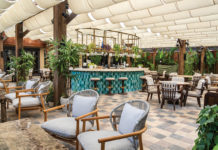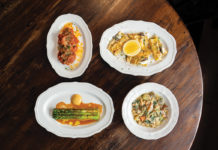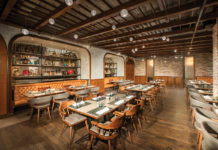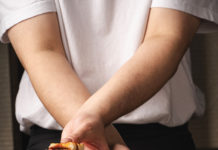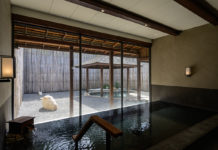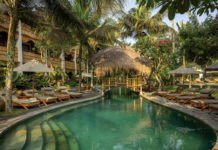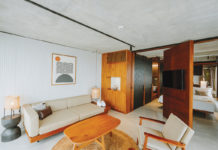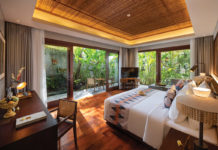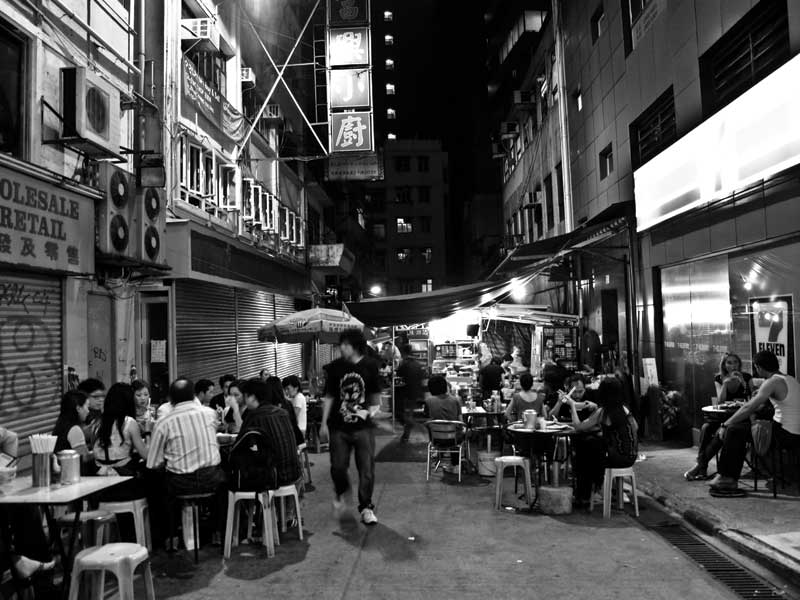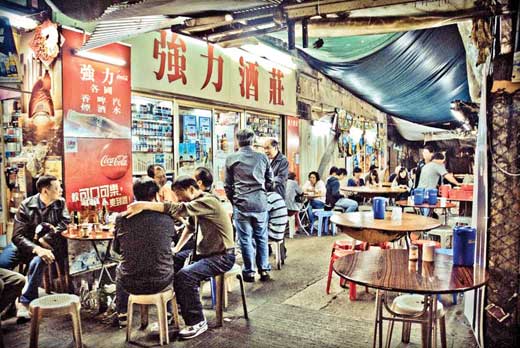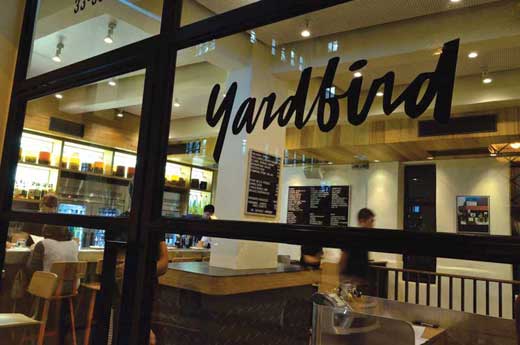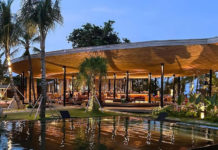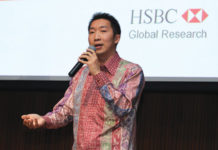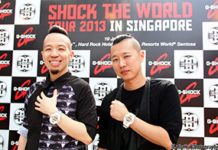The Pearl of the Orient is arguably Asia’s most exciting food city, with gastronomic gems ranging from Michelin-starred dim sum joints to elegant and experimental Michelin-starred cuisine. One trip is not nearly enough to eat all the wonderful things Hong Kong has to offer, but here are a few of the highlights.
Over the past decade and a half, Hong Kong has ridden China’s booming economy to become one of the region’s biggest hubs for business and trade. All of that money has helped elevate the city’s food scene, once dominated by dai pai dong (food carts) and old-school Chinese banquet halls, into one of the most exciting and cutting-edge in the world. While the city is losing some of its charming street food offerings in the rush to gentrify, there is a greater selection of delicious, high-quality eats available to the average Hong Konger than ever before.
Hong Kong’s fine dining scene is also famous for being one of the best in the region. In 2009, it became the second area in Asia, after Japan, to be found deserving of a Michelin Guide (and thus Michelin stars) for its restaurants. Nine of the city’s restaurants made the S. Pellegrino list of the Top 50 Restaurants in Asia and three of those making the top 10.
If your ideal vacation involves gorging on dim sum, dumplings and divine Chinese food, then Hong Kong should be at the top of your destination dining agenda.
The Twilight of Dai Pai Dong
The lifeblood of Hong Kong was once its dai pai dong, the food stalls that were ubiquitous all over the city, offering quick, tasty and cheap eats to the harried office workers and civil servants that helped build the global economic hub. As the city continues to modernise at a breakneck pack, the humble dai pai dong are becoming an increasingly rare sight (there are only 28 “official” dai pai dong left in the city), but there are still quite a few food stall strongholds scattered around town where you can enjoy all of Hong Kong’s favourite street eats.
The first place you will want to check out is the Temple Street Markets. Popular with both locals and tourists, you can find everything from knock-off designer bags to over-priced art. Attached to the market you’ll find an impressive collection of food stalls, opened only at night, serving up seafood and Tsing-Tao beers to the crowds dining alfresco along the street.
All chefs talk about wanting to use the freshest ingredients, but Chinese chefs take that truism especially seriously. When it comes to seafood, it means the main ingredient should be swimming just a few minutes before it’s served up. This can present a bit of a problem for the squeamish, but if you can handle that, you’ll find the seafood here pretty amazing. Dishes to look out for include chilli crab, salt and pepper squid, roast pigeon and hotpot rice.
Just because dai pai dong are disappearing off the streets doesn’t mean that Hong Kong’s favourite street foods are disappearing too. Instead, you’ll usually find them in tiny tuck shops, quick serve diners and even convenience stores. If you’re looking for sheer variety, it’s hard to go wrong with one of the “cooked food centres” attached to the city’s markets and municipal centres. One of the best is the Java Road Cooked Food Centre (Java Road Municipal Services Bldg, 99 Java Rd, North Point). That is where you’ll find Tung Po, a noodle purveyor made internationally popular with an endorsement from Anthony Bourdain, who praised the squid ink pasta served there as the best he’s ever had.
You’ll also find numerous dai pai dong foods at the Tai Po Hui Cooked Food Centre (3/F, 8 Heung Sze Wui St, Tai Po), which features outposts of some of the city’s most legendary food stands serving up delectable dim sum, wonton noodles and old-school Cantonese dishes. Try to track down Three Ladies Seafood, which does a great clay pot rice, and Dong Kee Shanghai Noodles for divine pork chop noodles.
Dim Sum Delights
For lovers of small bites and big flavours, dim sum is the height of Chinese cuisine. And no place on Earth takes dim sum as seriously as Hong Kong. While you can find these steamed, fried and baked treats just about everywhere in the the city, true aficionados will want to make the pilgrimage to one of the city’s dim sum meccas.
At the top of that list would have to be Tim Ho Wan (Shop 72, G/F, Olympian City 2, 18 Hoi Ting Road, Tai Kok Tsui; 852-23322896), the world’s first dim sum specialist to earn a coveted Michelin star. The rather non-descript original in Hong Kong’s Mong Kok District was opened in 2009 by Chef Mak Pui Gor, who used to craft dim sum at the Four Seasons Hong Kong Hotel’s three-starred Lung King Heen restaurant. By keeping standards high and prices low (it’s by far the cheapest Michelin-starred restaurant in the world), Pui Gor created a dim sum sensation that still draws crowds willing to queue for hours to try Tim Ho Wan’s legendary baked bun with BBQ pork. What makes the pork bun here so special is the thin, ultra-crisp shell that has been shellacked with sugar to create an addictive mix of salty and sweet in every bite. If you can survive the wait, be sure to also order the delicate pan fried turnip cake, the moreish vermicelli roll stuffed with pig liver and the ethereal steamed egg cake. Fortunately Tim Ho Wan has expanded to multiple locations (you’ll even find four outposts in Singapore).
For an old school Hong Kong experience, you have to go to what is arguably the city’s most famous dim sum restaurant, Maxim’s Palace (City Hall, Connaught Rd. Central and Edinburgh Place, Central District; +852 2521-1303; www.lcsd.gov.hk/ce/CulturalService/CityHall/en/rest_palace.php), which is actually located in Hong Kong’s City Hall. At this palace, you’ll encounter a magnificent view of Victoria Harbour as well as roving dim sum carts (another increasingly rare sight in Hong Kong) loaded up with high-quality classics such as har gau, siew mai and rice noodle rolls with various fillings. Just point to what you want and enjoy the instant gratification that only good dim sum carts can provide.
If, on the other hand, you are looking for something upscale and contemporary in your dim sum, head to Cuisine Cuisine (IFC mall, Podium Level 3, 8 Finance St, Central; +852 2393 3933; www.cuisinecuisine.hk), where some of the city’s most skilled dim sum chefs ply their trade in an ultra-modern venue inside Hong Kong’s tallest skyscraper. The dim sum here also gets some modern twists, with recommended dishes including crispy chicken and foie gras taro puffs and baked barbecued pork and pineapple buns with crystal sugar.
The Heights of HK Cuisine
While there is no shortage of cheap and delicious food in Hong Kong, there is also no shortage of sublime fine dining experiences available to adventurous diners. Although this is far from an exhaustive list, here are a few of the restaurants that should rate highly on your dining agenda in Hong Kong.
Lung King Heen
The world’s first Chinese restaurant to be awarded the coveted Michelin three-star rating, Lung King Heen, located inside the Four Seasons Hotel Hong Kong, is led by Cantonese Master Chef Chan Yan Tak, who earned his triple stars in 2009 and continues to wow critics with his superbly crafted dishes (which also earned the restaurant ninth place in the latest 50 Best Restaurants in Asia list). Lung King Heen, which means “view of the dragon,” features a breathtaking view of Victoria Harbour and its spectacular skyline, which is reflected in the dining room’s undulating silver-leaf ceiling. Seafood and dim sum are among the specialities on the extensive menu, which values texture just as much as flavour. Chan Yan Tak, who has worked in restaurants since he was a young boy, has a light touch in the kitchen, creating deceptively simple dishes which are beautifully presented and accentuate the ingredients’ inherent natural flavours. Signatures include crispy eel with sweet mustard sauce, double-boiled sea cucumber broth with Yunnan ham and brassica, and wok-fried prawns with a crispy green pea purée. (8 Finance St, Central; +852 3196 8888; www.fourseasons.com/hongkong/dining)
BO Innovation
Chef Alvin Leung Jr., the mastermind behind BO Innovation, is a bit of an eccentric. The self-styled “demon chef” calls the food he serves at his signature restaurant “X-treme Chinese Cuisine” and while it is extremely unusual, the critical consensus is that it’s also extremely good. After climbing up and down in the rankings, BO Innovation earned its third Michelin Star in the latest Hong Kong guide. The blue streaks in his long hair often get him described as a “rock star chef,” but Leung’s formal training was actually in engineering. His scientific knowledge comes in handy in the kitchen due to all of the high-tech gadgets and molecular gastronomy techniques that he deploys in his dishes, which take classic Chinese dishes and reinvents them for the 21st century. For example, his take on the classic xiao long bao dumpling eschews the flour wrapping in favour of an emulsified skin formed around the rich liquid broth core. His French quail served ‘Beggar Style’ (baked in clay) is amazing, as is the blue lobster served with a spicy Sichuan hollandaise sauce. (60 Johnston Rd, Wan Chai; +852 2850 8371; www.boinnovation.com)
Le Dôme de Cristal
The world’s first Cristal-branded Champagne bar and restaurant, Le Dôme de Cristal is as glamorous and extravagant as the precious bubbles themselves. A joint venture between Louis Roederer’s prestigious Cristal Champagne and the Ambrosia Cuisines Group, it is a shimmering space blazoned with liberal lashings of Champagne-hued glamour, from the palatial interiors inspired by Louis Roederer’s Cristal Mansion to the world-class European cuisine served alongside 21 different Cristal varieties. Enjoy your bubbly at the Oyster and Champagne Bar while nibbling on elegant tapas, such as crabmeat and salmon roe salad with polished cherry tomatoes or a lobster with a spicy kimchi. The signature French Oyster Platter should also be tried, which includes four different varieties of the ocean delicacy. Oysters are obvious, but all of the restaurant’s luxurious dishes are designed to pair perfectly with the house Champagne, such as the Sicilian red shrimp linguine, which is served al dente and doused in a tangy and sweet cherry tomato sauce made with lobster oil, lobster broth and lobster butter. (Galleria, Queen’s Road Central Central District; +852 2116 4688; www.cristal-hk.com)
8 1/2 Otto e Mezzo BOMBANA
Chef Umberto Bombana’s passion project, 8 ½ Otto e Mezzo is the undisputed king of Italian restaurants in Asia. In fact, it’s the only Italian restaurant outside of Italy to be awarded 3 Michelin Stars. Formerly the Executive Chef of The Ritz-Carlton Hotel Hong Kong’s legendary Italian eatery, Bombana, who has been hailed as “The King of White Truffles” created 8 ½ Otto e Mezzo in January 2010. After only a few months, the restaurant was awarded with two Michelin stars, with the third arriving in December 2011. The kitchen is adroit at rendering Bombana’s many refined dishes, such as the signature lobster salad and Oscietra caviar celery jelly with couscous, winter leaves and Champagne dressing, but you will also find some exceptionally tasty yet rustic fare, like a perfectly fried crispy veal chop that comes out bigger than your plate. The restaurant even has its own temperature-controlled ageing room where Bombana can make sure all of the restaurant’s world-class ham and cheese offerings can reach the ideal maturity before being served. The homemade pasta dishes, such as the pappardelle with lamb and mushroom ragout, are made with a precision you’re unlikely to find anywhere else in Asia. (202 Alexandra House, 18 Chater Road, Central District; +852 2537 8859; www.ottoemezzobombana.com)
Above & Beyond
Another Chinese fine dining restaurant worth your attention is Above & Beyond, located on the 28th floor of Hotel Icon. Its dramatic décor, featuring handpicked books, art-related tomes and a provocative range of paintings from local artists certainly give it a different feel than most Chinese fine dining restaurants, though the floor-to-ceiling vista of Victoria Harbour reminds you just how high-end Above & Beyond is. The sleek main dining room hosts a number of intimate table settings with leather-upholstered booths. Executive Chef Joseph Tse’s menu is full of both authentic and adapted dishes, with a focus on seasonal Cantonese fare. The gourmet dim sum selection is superb, with winners including crabmeat spring rolls and the sweet and sour deep-fried wontons. The five-spice sliced Angus beef brisket is rich and indulgent, while the scallop and vegetable cheung fun roll offers a smooth and decadent alternative to a more traditional filling. If opulent is what you’re after, the lobster with egg white and black truffles is something you won’t want to miss – the lobster is steamed and de-shelled, then placed delicately in a small pool of gently cooked egg white with a sprinkling of black truffle to complete the dish. (Hotel ICON, 17 Science Museum Rd, Tsim Sha Tsui East, Kowloon; +852 3400 1318; www.hotel-icon.com/dining.aspx)
Yardbird
Opened in 2011, Yardbird caused quite a sensation when it opened and remains one of Hong Kong’s most happening restaurants to this day. The unlikely concept for the restaurant, created by a couple of Canadian F&B vets, is a funky design-centric space filled with skateboard art and a menu focusing almost exclusively on yakitori – Japanese skewers utilising different parts of the chicken, including breast, skin, hearts, gizzards and even neck. What makes the beak-to-tail-feather food philosophy here work is the way that each part of the local organic birds they serve up is treated like a completely different ingredient, cooked using whatever technique reveals its ideal taste and texture. You would be best served by ordering as many skewers as possible, as well as an order of KFC, Korean fried cauliflower with a shatteringly crisp batter and spicy sauce. Yardbird helped initiate a democratic trend among Hong Kong restaurants by eliminating reservations, so get there early and sip on some of the excellent cocktails at the bar while you wait. (33-35 Bridges Street, Sheung Wan; +852 2547 9273; www.yardbirdrestaurant.com)
Zuma
Izakayas are the Japanese equivalents of pubs, so you could consider Zuma a Japanese-style gastropub, an upmarket izakaya offering a lively atmosphere and exquisite eats, making it one of Hong Kong’s most happening Japanese restaurants. In a city where space is a treat in itself, Zuma’s 10,000 square foot restaurant is quite a sight as it hosts not one, but three dramatic open kitchens, including ones devoted to sushi and robata. Zuma is perhaps most loved for its robata grill creations, such as the gyuhire sumibiyaki karami zuke that sees a spicy and succulent beef tenderloin sprinkled in sesame, then finished with a dash of red chilli and sweet soy. There is also the hokkaido scallops with a delightfully crisp grating of crunchy apple, wasabi and sweet soy, both tangy and exquisitely delicate. Over to the sushi counter and Head Sushi Chef Kazutoshi Endo tempts with his variety of market fresh sashimi, nigiri and maki sushi. The dynamite spider roll is a firm favourite, with its soft shell crab, chilli mayonnaise, cucumber and wasabi tobiko sauce. For the sheer spectacle, opt for the sashimi omakase, where the chef whips up premium cuts in an oversized, ice-filled dish, cutting each sliver with powerful precision. After you’ve had your fill, head over to the Zuma Bar, opened last year, where a state-of-the-art sound system caters to the world-class DJs that regularly come through. (Landmark, Level 5 & 6, 15 Queen’s Road, Central Hong Kong; +852 3657 6388; www.zumarestaurant.com)
Amber
The highest ranked Hong Kong eatery on the Top 50 Restaurants in Asia list (at number 4), Amber is arguably the city’s best French restaurant (those who would argue against it would posit Caprese in the Four Seasons Hong Kong instead, but that restaurant recently lost its Head Chef and was downgraded from 3 to 2-stars in the latest Michelin Guide). Helmed by Chef Richard Ekkebus, Amber specialises in sublime French seafood dishes served up in a palatial setting. The restaurant’s dramatic chandelier centrepiece, made up of 4,320 bronze rods, radiates a gilded halo over the restaurant’s richly appointed dining room. Trained in the kitchens of Alain Passard, Guy Savoy and Pierre Gagnaire, Chef Ekkebus upholds French traditions while also taking full advantage of Hong Kong’s unique crossroads between East and West, incorporating lavish ingredients such as amadai fish, line caught and delivered the same day from Japan, seasonal blue lobsters from Brittany, Tasmanian truffles, Spanish fraise de bois and Chinese dragon fruit into a menu that is refreshed every three months. The sommelier will have no problem finding the ideal vino to pair with your dishes, as the list here contains over one-thousand references, all artisanal, top quality wines culled from old world vintages in France and Italy as well as exciting bottles sourced from Chile, Argentina and Portugal. (The Landmark Mandarin Oriental, 7th floor, 15 Queen’s Road Central, Central;+852 2132 0066; www.amberhongkong.com)


